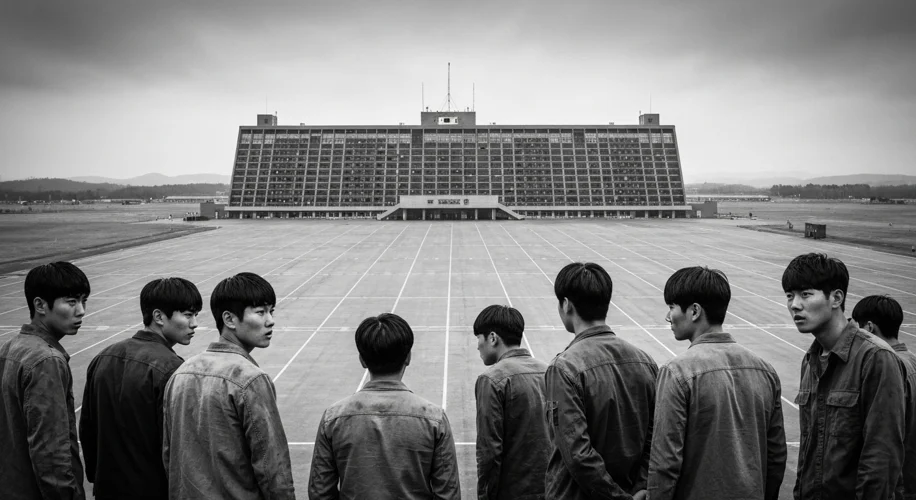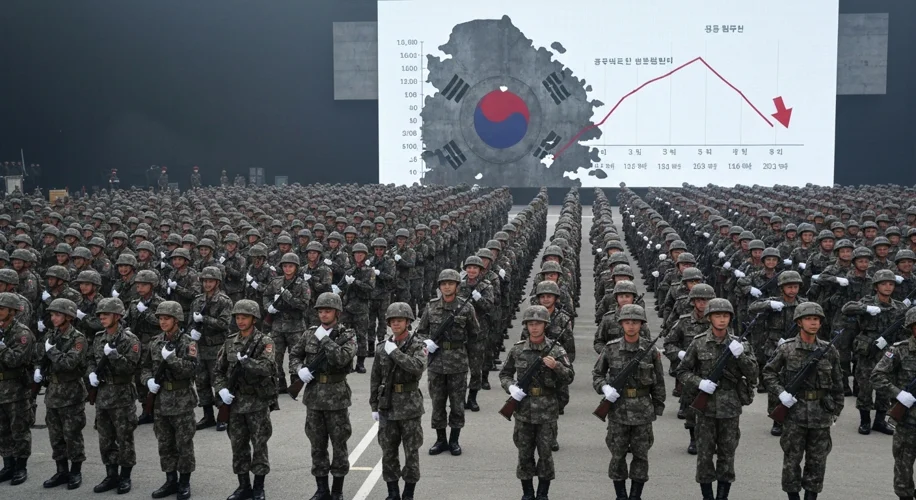The Republic of Korea, a nation perched on the edge of a divided peninsula, has long maintained a formidable military. For decades, its defense strategy has rested on a bedrock of robust manpower, a necessity forged in the crucible of the Korean War and the ever-present threat from the North. Yet, a silent, inexorable force is reshaping this landscape: a dramatic decline in the male population, the very demographic that has traditionally filled the ranks of the ROK Army, Navy, and Air Force.
South Korea’s birth rate is, by all measures, alarmingly low. In 2023, it registered a staggering 0.72 births per woman, the lowest in the world. This isn’t merely a statistic; it’s a demographic earthquake with profound implications, particularly for its conscription-based military. For young South Korean men, mandatory military service has been a rite of passage, a period of national duty. But as the pool of eligible young men shrinks, the sheer numbers required to sustain the current military structure are becoming increasingly difficult to meet.

The historical context is crucial. The Korean War (1950-1953) left an indelible mark on the nation, fostering a deep-seated sense of insecurity and a commitment to self-defense. The division of the peninsula and the ongoing military standoff with North Korea have necessitated a large, highly trained, and ready military force. For generations, this meant a reliance on conscription, drawing heavily from the male population. The mandatory service period, typically around 18 to 21 months, has been a significant aspect of South Korean society, impacting career paths and family life.
Key actors in this unfolding drama include the South Korean government, tasked with balancing national security needs with evolving societal demographics, and the military itself, which must adapt its strategies and recruitment methods. Young South Korean men, facing the prospect of a smaller pool for conscription and potentially altered service requirements, are at the epicenter of this demographic shift. Their perspectives, hopes, and anxieties are central to understanding the human dimension of this national challenge.
The event itself is not a single, explosive moment, but rather a gradual, systemic change driven by demographic trends. The primary driver is the declining birth rate, a phenomenon observed across many developed nations but particularly acute in South Korea. Factors contributing to this include the high cost of education and housing, intense competition in the job market, societal pressure on women, and changing attitudes towards marriage and family.
The consequences of this shrinking military-age population are multifaceted. Firstly, it poses a direct challenge to South Korea’s defense readiness. Maintaining the current troop levels becomes increasingly difficult, potentially necessitating a reduction in force size or a shift in military structure. This could involve greater reliance on technological advancements, such as AI-driven defense systems and advanced weaponry, to offset reduced personnel numbers.
Secondly, it raises questions about the equity and sustainability of the conscription system. As the number of conscripts decreases, the burden on each individual may increase, or the system itself might need to be reformed. Debates around expanding conscription to women, though highly sensitive and politically charged, are likely to resurface.
Furthermore, the demographic trend has broader security implications for the Korean Peninsula and Northeast Asia. A potentially less robust South Korean military could alter the regional strategic balance, influencing the calculus of both North Korea and its allies, as well as the United States, South Korea’s key security partner.
Analysis of this situation reveals a complex interplay of demographic, social, economic, and security factors. South Korea is not unique in facing a declining birth rate, but the intensity of this trend, coupled with the persistent security threat from North Korea, creates a particularly acute challenge. The nation’s response will likely involve a strategic re-evaluation of its defense posture, a greater investment in high-tech military solutions, and potentially significant societal adjustments to the nature of national service.
The story of South Korea’s shrinking military is a potent illustration of how deeply demographic shifts can impact a nation’s most fundamental institutions. It is a narrative of adaptation, a testament to a society grappling with the consequences of its own evolving future, all while standing vigilant against a long-standing threat. The coming years will undoubtedly see South Korea navigate these uncharted waters, seeking to maintain its security and sovereignty in a world where the numbers on the battlefield are no longer guaranteed.

